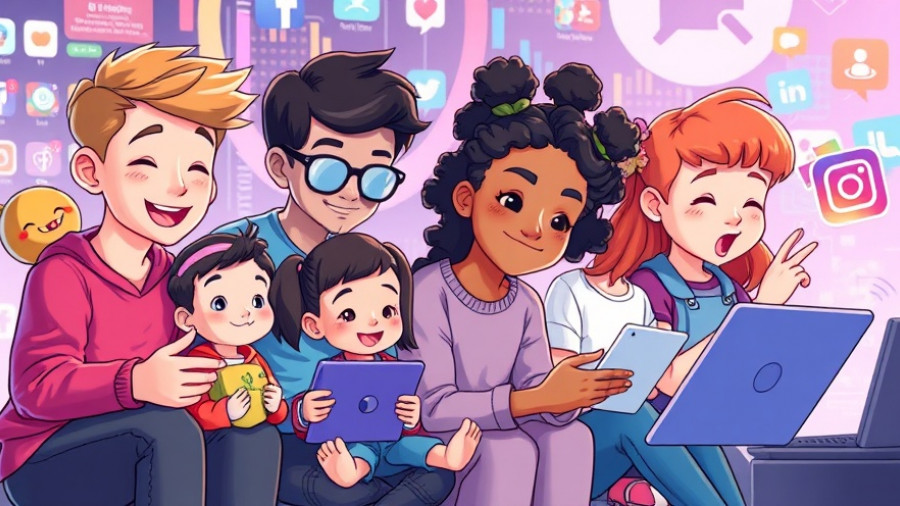
Challenging Ageism with Data: John Long’s Stand Against Industry Norms
In an insightful response to the ongoing narrative surrounding ageism in the advertising sector, John Long, Executive Creative Director at Digitas, has emerged as a pivotal voice against assumptions that older creatives struggle with technological adaptation, specifically regarding AI. His arguments gained traction following media commentary on WPP’s decline, which suggested that mid-career advertising professionals were at risk unless they rapidly acquired skills in generative AI.
Long’s critique, shared via LinkedIn and met with ample engagement, dismantles the oversimplified view that links age to technological incompetence. According to his analysis, a typical 40-year-old in 2025 was already part of the digital ecosystem, spending their entire careers crafting strategies for social media and technological platforms that have dominated advertising for over a decade. He argues, quite compellingly, that individuals who began their careers when Facebook and Twitter launched have, in effect, cultivated profound expertise in digital-first advertising.
Decoding Generational Technology Adoption in Advertising
This enlightened viewpoint challenges commonly held stereotypes, notably the idea that older professionals are less equipped to navigate the shifting advertising landscape driven by AI. Long's breakdown reveals how creatives over 40 were in their formative years of career development during the rise of significant technologies that have become ingrained in modern advertising.
Moreover, industry professionals like Adel Borky support Long’s perspective by echoing the value of experience. Borky argues he's often witnessed that older experts, sometimes dismissed as relics of traditional marketing, possess critical skills that enhance their effectiveness even within a technology-centric environment. He describes the phenomenon of “Technoplasmosis”—an ailment suggesting that younger marketers are overly reliant on frameworks provided by tech corporations, which can dilute genuine expertise.
Understanding the Current Landscape and Its Relevance
As the advertising industry embraces generative AI, with a recent study from the Interactive Advertising Bureau indicating that 86% of advertisers plan to leverage these technologies, the implications for talent valuation become even more significant. Is the industry prepared to recognize the capabilities of seasoned professionals amidst rampant layoffs and corporate restructures?
WPP’s 2025 cuts, which reduced their staff by 7,000 and saw a significant drop in revenue, highlight the backdrop of a competitive and evolving landscape. Such drastic shifts reinforce the notion that the industry might not be as ageist as earlier suggested, with opportunities now emerging for adept veterans to mentor younger talent in navigating the complexities of digital creativity combined with AI.
Future Trends: Bridging Experience with AI Adaptation
As businesses consider integrating AI more deeply into their strategic frameworks, understanding the intersection between experience and technology becomes imperative. Companies that solicit input from their more seasoned creatives could actually find innovative ways to merge traditional marketing wisdom with contemporary digital practices.
Long’s points resonate especially across conversations about building teams that include diversity of thought encompassing both youth and experience. The narrative that age predicts adaptability is being persistently dismantled by evidence showing that professional creativity is an amalgamation of historical insight and contemporary capabilities.
Actionable Insights for Small Businesses
For small businesses navigating this landscape, embracing a workforce that spans various age groups can provide unexpected strengths. As the digital advertising ecosystem continues to grow and change, the possibility of mentoring arrangements or creative brainstorming sessions that involve professionals across different career stages could spark innovation.
This collaborative culture also prepares teams to respond effectively to market dynamics, encouraging adaptability without alienating experienced professionals. Small businesses should take advantage of this opportunity by likewise reassessing their hiring processes to emphasize diverse perspectives and collective ability rather than solely focusing on age as a qualifying factor.
Conclusion: Moving Forward with Inclusive Strategies
The ongoing conversation about age in advertising proves that the challenges of adaptation must be met with inclusivity rather than exclusion. As the marketing industry continues to innovate, it is crucial for companies to recognize the valuable contributions of all generations in leveraging technology such as AI.
Fostering collaboration between different age groups can lead to a more resilient advertising environment. Recognizing experience as a strength, small businesses can build teams that breathe innovation and creativity into their marketing practices—ensuring their strategies are not only current but also deeply rooted in human understanding.
 Add Row
Add Row  Add
Add 




Write A Comment